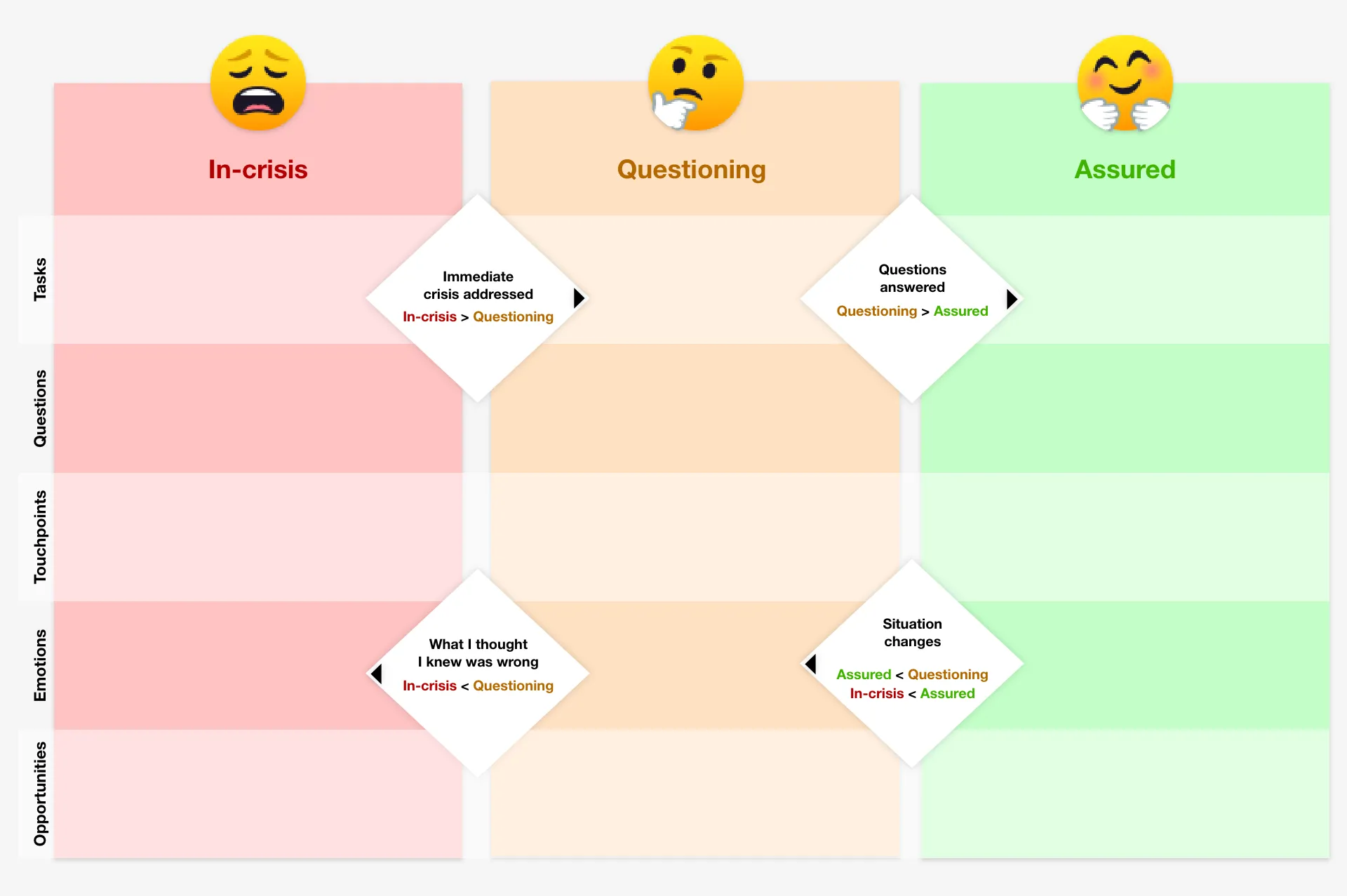How to produce experience maps for non-linear user journeys
During a recent experience mapping workshop, our User Experience and Digital Strategy teams were faced with an unusual challenge.
The client dealt with a highly emotional cause and had an unusually varied user base, ranging from uninitiated users to experts and medical professionals. These users’ needs differed drastically, based on an innumerable set of variables.
So how could we plot a linear user journey of any significance?
The Issue With Users Not Fitting into a Standard Linear Journey
So, let's say you're a User Experience professional designing a digital product that could be used by absolutely anyone.
We’re not talking about the latest “challenger bank that resonates with digital-native Gen-Z users” or a journey that follows a very clear linear path, like applying for a mortgage.
The project at hand regards a knowledge base that provides users with a wide range of topics. From what financial support individuals are entitled to from the government, right through to looking after their mental health. The knowledge base is used by people from all walks of life: a wide spectrum of age groups with hugely varying digital competence.
What is an Experience Map?
An experience map is a visualisation of the entire journey a person goes through in order to achieve a goal. They are used for understanding a general human behaviour. A customer journey map comparatively, is a more specific map focused on issues related to a specific business.
So if you identify a broad range of user personas, each with a unique starting point, an experience map starts to feel like an impossible output to create.
Our Approach to Finding a Commonality in a Varied User Journey
Luckily, we love a challenge. During the research project at hand, we became increasingly aware of the diversity of the user base. It was clear the tasks were so complex and varied, that mapping something representative of a "typical" user journey would be impossible
We continued with the Discovery workshop session as usual and aimed to document all potential user queries, touchpoints, opportunities, and experiences.
We began by talking with the stakeholders in the room about various tasks that a user may undertake. From here, we tried to arrange the responses in a logical order to shape some form of map. As discussions went on, taking all stakeholder comments into account, the unifying factor became clear: nobody can plan for a crisis.
The findings showed, in this case, a user’s emotional state and current situation could shift on a daily basis. Therefore, our aim was to ensure the new solution would help users to achieve their goals as quickly and easily as possible, despite their situation or emotional state.
In a crisis situation, the type of information needed and the emotional state of the website user will differ vastly from the norm. With this common anomaly in mind, we started to create a slightly different solution...
Our Solution: A New Way of Experience Mapping
We started to group users’ potential journeys into 3 different emotional states:
- In-crisis
- Questioning
- Assured
This allowed us to plot separate user journeys across three emotional states to represent a cross-section of potential users. Each journey highlights the user’s emotional state during different scenarios. We also considered what might cause the user to move between each of the three states.
Within each emotional state, we defined how a user’s tasks, questions, touchpoints, emotions and opportunities may vary.
The Mental Content Model for Experience Mapping
This all came together to form what we call 'The Mental Content Model'. Instead of a standard, horizontal journey, we bypassed the need to define user personas as discrete, unchanging types. This structure gives us the perfect tool against which to benchmark wireframes, content, and designs.
Considering a user’s state of mind allows you, or the designer, to stress-test product designs ahead of development. Ultimately, this approach ensures you can design with empathy, assessing outputs through the eyes of the user, whatever their goal or emotional state.

Since 2003, we've recognised that no two client requirements are the same. Our Discovery process is designed to follow research best practice whilst gaining an in-depth understanding of the business and user requirements. Our process, above all, is flexible. We adjust to challenges as they arise, and create the best output for the unique client.
Get in touch with our Digital Strategy experts to find out more.

CTI Digital's team of digital marketing and technology experts specialise in digital strategy, web development, and growth marketing. We help ambitious brands navigate the digital landscape with proven strategies and cutting-edge technical expertise.
